Impressive Results with 6000 Hairs – Bartlomiej’s Case
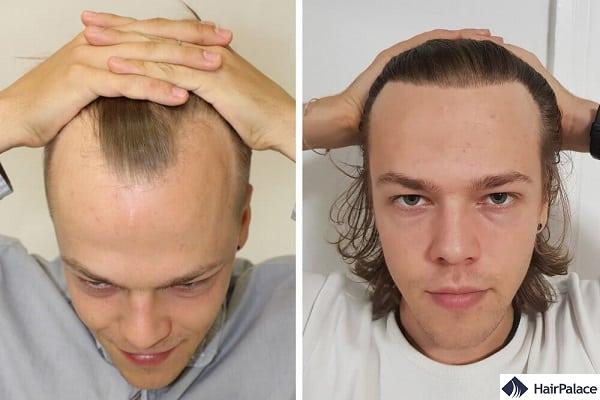
How many hairs are necessary to achieve a good result with the hair transplant?
The number differs in each case – it depends on the size of the recipient area, the natural density of the hair, and the quality of the donor hairs as well.
Bartlomiej contacted our clinic in early July 2017.
He sent us photos to be evaluated and explained that his goal was to restore his receding hairline.
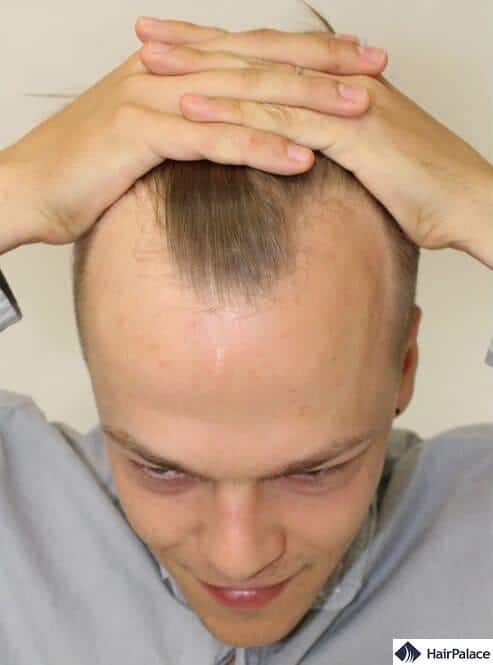
Based on his pictures the doctors suggested a 6000 hair transplant, depending on the shape and position of the hairline he had in mind.
After receiving his treatment plan options, Bartlomiej was quick to book in. Two days after receiving the precise details, he reserved one of the last availabilities for August.
He had his surgery on the 23-24th of August 2017, when a total of 6397 hairs were transplanted to the frontal zone. This roughly equates to a 3000 graft hair transplant.
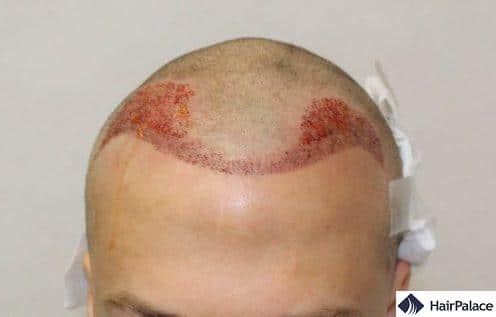
With the FUE2 Safe System method, we use the success rate is exceptionally high. With this technique, around 95% of the transplanted hairs grow out.
However, proper aftercare is essential to achieve a good result.
To make sure that everything goes well and that the surgeons can aid their patients after they travel back home, we have 6 follow-ups after the procedure.
Though it is an option to attend the check-ups in person at one of our consultations, the majority of the patients send us photos in due course.
Naturally, patients are always free to send us photos for a check at any point they have questions or concerns.
The first check-up is 1 week after the surgery.
At this point, the implanted hairs must be in place and there should be no sign of inflammation. A bit of numbness or itching is a normal part of the healing.
In Bartlomiej’s case everything was in order at the first check-up:
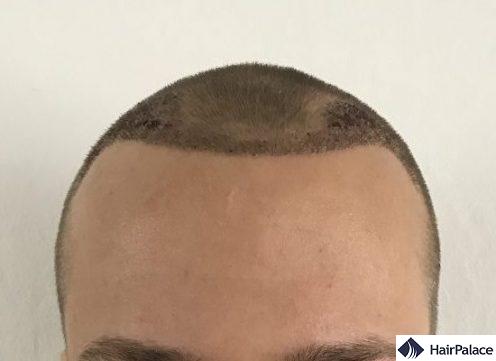
From the 2nd post-op week patients have to start soaking and massaging the implanted area.
This must be done ever so gently, to gradually remove the scabs.
The amount of scabs and how many soaks it takes to remove them depends on several individual aspects.
It is completely fine if there are still some scabs 2 weeks after the surgery, but the scalp must be completely clean by the 3rd check-up:
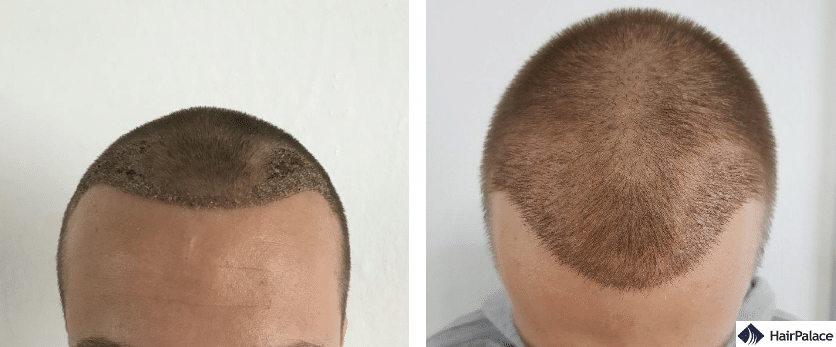
Between the 3rd post-op week and the 3rd post-op month, the transplanted hairs fall out.
By this time the implanted roots are embedded in their new place, only the hair strands are falling.
As a result, by the 4th check-up, the density of the implanted area is almost the same it was before the transplant.
In Bartlomiej’s case a few hairs were already grown out by the end of the 3rd post-op month:
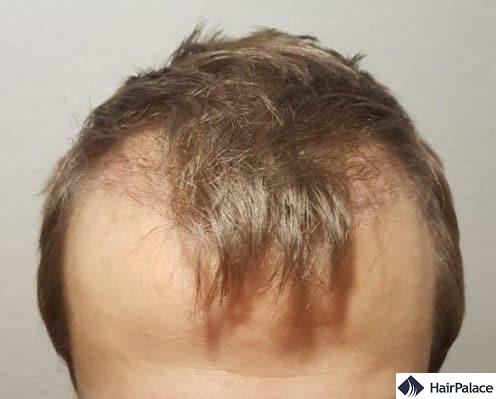
The transplanted hairs start to grow out from the 4th post-op month.
In many cases, patients experience a striking change. Usually, approximately 50% of the transplanted hairs grow out in only 3 months.
As in Bartlomiej’s case the hairs started to grow out a bit earlier, and the density was superb by the 6 months check-up:
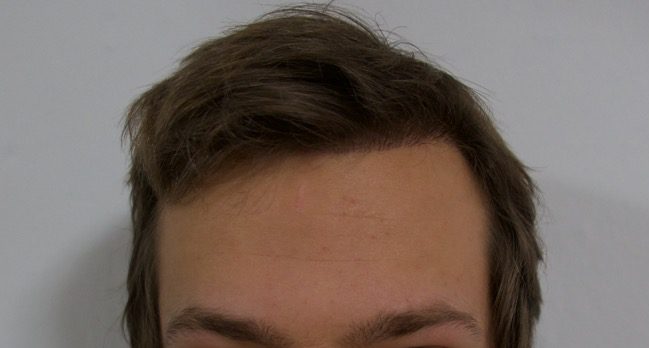
Typically the remaining hairs grow out by the 12th month after the surgery.
Even if the progress is slower, the regrowth of the new hair ends in 15-18 months after the surgery.
Bartlomiej could see the outcome of the hair transplant 1 year after his surgery:
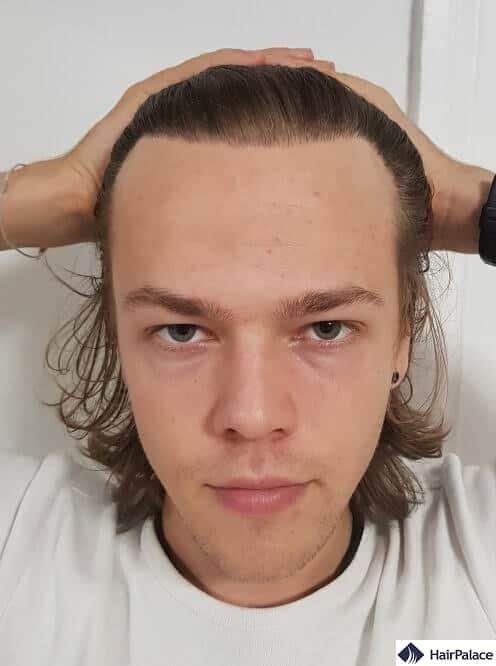
3000 graft hair transplant cost
A 3000-graft hair transplant can be incredibly expensive in countries like England or Germany, often costing above €6,000.
These high prices can put a significant strain on patients, especially considering that this is a cosmetic procedure not covered by insurance.
But there is a better solution.
At HairPalace in Budapest, you can enjoy the same standards and natural-looking results for just a fraction of the cost.
Thanks to our revolutionary FUE2 technique and the expertise of our highly trained surgeons, we can implant 3000 grafts in a single day, minimising your downtime while maximising results.
We maintain strict European medical standards, ensuring you receive world-class care without the premium price tag.
Book your free online consultation today and take the first step toward restoring your hair, and your confidence.
FAQ
The cost of a 3000 hair graft procedure can vary greatly based on the clinic of your choice, the method of transplantation and the experience of your surgeon. In the UK, you can generally expect to pay anywhere from £6000 to £15,000.

